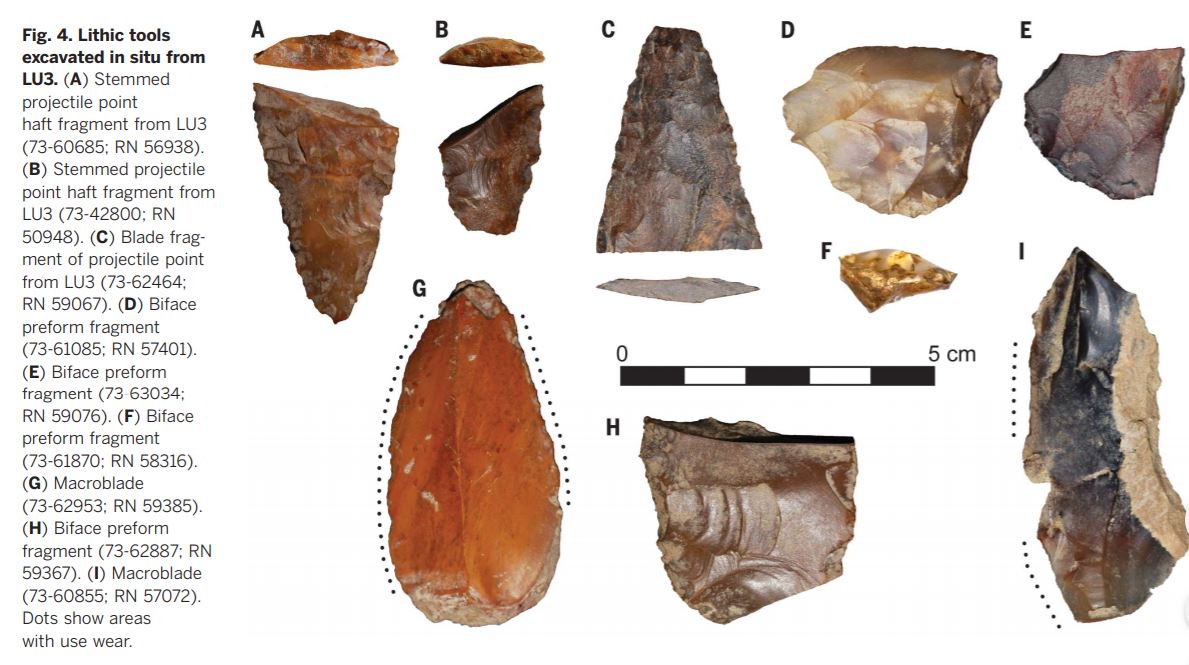Artifacts from an archaeological dig at the Cooper's Ferry site located along the Salmon River, a tributary of the larger Columbia River basin in western Idaho, suggest that the original native Americans were here 1,000 years earlier than previously thought, about 16,000 years ago.
The findings add weight to the hypothesis that initial human migration to the Americas followed a Pacific coastal route rather than through the opening of an inland ice-free corridor. The belief is that timing and position of the Cooper's Ferry site, located at the confluence of Rock Creek and the lower Salmon River, is consistent with and most easily explained as the result of an early Pacific coastal migration.
The site includes two dig areas; the published findings are about artifacts found in area A. In the lower part of that area, researchers uncovered several hundred artifacts, including stone tools; charcoal; fire-cracked rock; and bone fragments likely from medium- to large-bodied animals, Davis said. They also found evidence of a fire hearth, a food processing station and other pits created as part of domestic activities at the site.
Credit: Davis et al., Science 365, 891–897 (2019) 30 August 2019
Over the last two summers, a team of students and researchers reached the lower layers of the site, which, as expected, contained some of the oldest artifacts uncovered. Working with a team of researchers at Oxford University, who were able to successfully radiocarbon date a number of the animal bone fragments, they found many artifacts from the lowest layers are associated with dates in the range of 15,000 to 16,000 years old.
"Prior to getting these radiocarbon ages, the oldest things we'd found dated mostly in the 13,000-year range, and the earliest evidence of people in the Americas had been dated to just before 14,000 years old in a handful of other sites," said Loren Davis, a professor of anthropology at Oregon State University and the study's lead author. "When I first saw that the lower archaeological layer contained radiocarbon ages older than 14,000 years, I was stunned but skeptical and needed to see those numbers repeated over and over just to be sure they're right. So we ran more radiocarbon dates, and the lower layer consistently dated between 14,000-16,000 years old."
The dates from the oldest artifacts challenge the long-held "Clovis First" theory of early migration to the Americas, which suggested that people crossed from Siberia into North America and traveled down through an opening in the ice sheet near the present-day Dakotas. The ice-free corridor is hypothesized to have opened as early as 14,800 years ago, well after the date of the oldest artifacts found at Cooper's Ferry.
"Now we have good evidence that people were in Idaho before that corridor opened," he said. "This evidence leads us to conclude that early peoples moved south of continental ice sheets along the Pacific coast," Davis said.
They also found tooth fragments from an extinct form of horse known to have lived in North America at the end of the last glacial period. These tooth fragments, along with the radiocarbon dating, show that Cooper's Ferry is the oldest radiocarbon-dated site in North America that includes artifacts associated with the bones of extinct animals.
The oldest artifacts uncovered at Cooper's Ferry also are very similar in form to older artifacts found in northeastern Asia, and particularly, Japan.





Comments